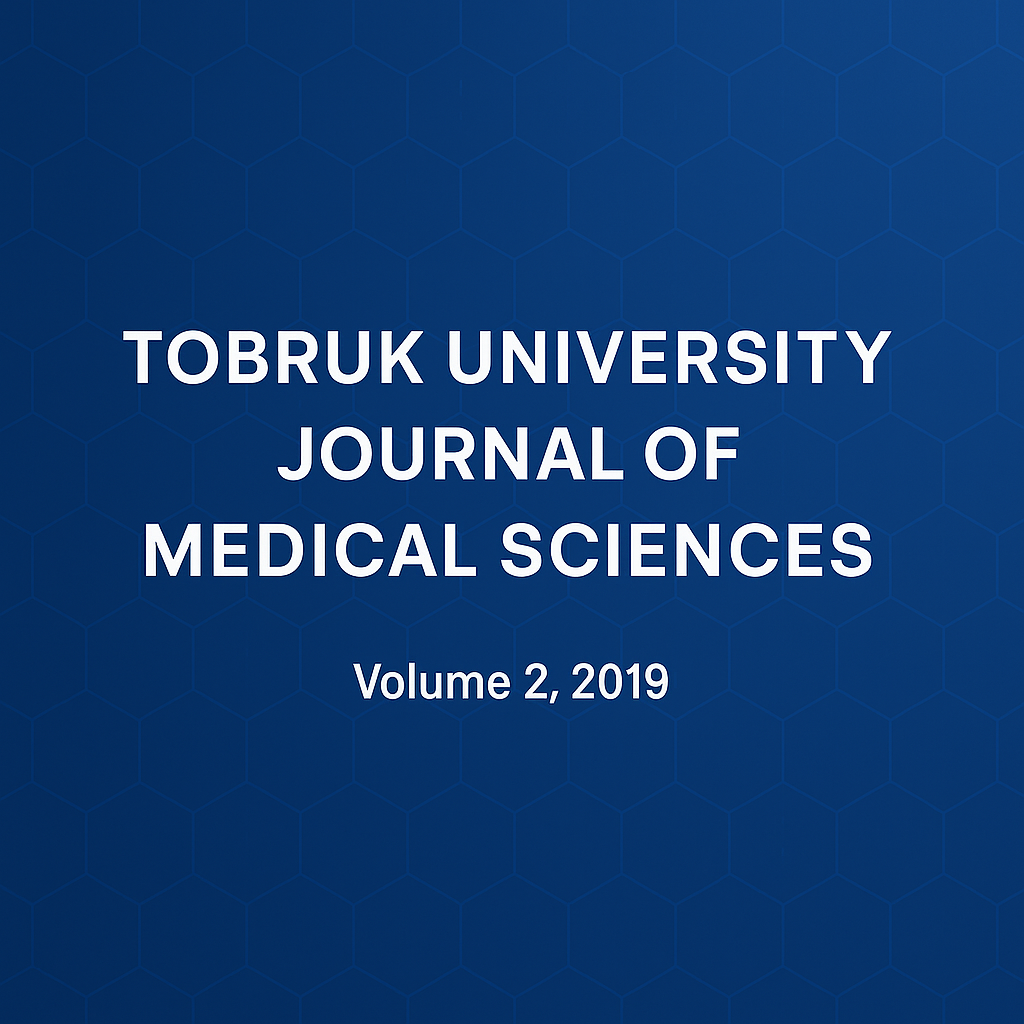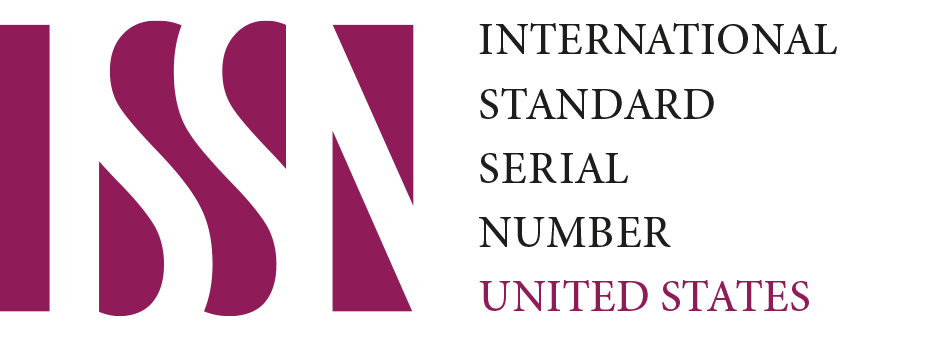Profile of Prematurity in Tobruk Medical Center Risk Factors, Complications, and Outcome 2017-2018
DOI:
https://doi.org/10.64516/cw3bbw10Keywords:
Prematurity;, Maternal factors;, Complications, OutcomeAbstract
Preterm birth is a major determinant of neonatal mortality and morbidity and has long-term adverse consequences for health. The main target in our study is to determine the risk factors,complications, outcome and incidence of prematurity in Tobruk Medical Center. This prospective study was conducted on174 preterm neonates which delivered at Tobruk Neonatal Intensive Care Unit from January 2017 to January 2018. The 174preterm newborns were aged between 28 to 36 weeks .The main risk factor is maternal(48%), fetal (24%) and idiopathic (20%) .The maternal risk factors for preterm delivery were(27.5%) with premature rupture of membranes, (23.5%) urinary tract infection, (13.2%) with vaginal infection,(13.2%) idiopathic,(12.6%) have bleeding,(10.9%) hypertensive, (9.7%) diabetic and(1%) other causes. The complications present were respiratory(33.9%), sepsis(22.9%), apnea (17.8%) ,metabolic(8.6%), central nervous system (6.8%), congenital malformation (6.8%), and gastro intestinal complication was (0.5%).Outcome was 126 discharged(72.4%), 44 died (25.2%), and 4 transferred (2.2% ), cause of death was 85% respiratory, 14% sepsis, and1% GIT ( necrotizing enterocolitis) .This study found that the incidence of prematurity was 22.8% in Tobruk Medical Center during one year.The predominant risk factor for prematurity was maternal and the respiratory was the most common complication.
References
1-International classification of diseases and related health problems.(1992). 10th revision. Geneva: World Health Organization.
2-Wang M.L., Dorer D.J., Fleming M.P., Catlin E.A.et.al.(2004).Clinical outcomes of near-term infants. Pediatrics;114:372-6. PMID:15286219 doi:10.1542/ peds.114.2.372
3.Ahmadi SH, Kazemi F, Masoumi SZ, Parsa P, Roshanaei G.(2016) Intervention based on BASNEF model increases exclusive breastfeeding in preterm infants in Iran: a randomized controlled trial.International Breastfeeding Journal;11:30.
4. Masumi Z, Parsa P.( 2015) An epidemiologic survey on the causes of infertility in patients referred to infertility center in Fatemieh Hospital in Hamadan. Iranian Journal of Reproductive Medicine;13(8):513–516.
5. Mirlashari J, Rassouli M. AndisheheRafee. 1st ed. Tehran.(2007). Nursing care of infant and children; pp. 70–1.
6. Aagaard HR, Hall RN.(2008). Mothers' next term experiences of having a preterm infant in the Neonatal previous term Care next term Unit: a Meta- Synthesis. Journal of Nursing Pediatric; 23(3):e26–36.
7. Sarparast L, Farhadi R, Sarparast M, Shafai S.(2015). The Effect of Kangaroo Mother Care on Neonatal Outcomes in Iranian Hospitals: a review.J Pediatric Review.;3(1):e195.
8.UN-IGME TI-AGfCME. (2014). Levels & Trends in Child Mortality Report.United Nations Children’s Fund.
9. HowsonCP, KinneyMV, LawnJE. (2012). Born Too Soon: The Global Action Report on Preterm Birth. WHO, Geneva.
10.Gladstone M, Oliver C. (2015). Survival, morbidity, growth and developmental delay for babies born preterm in low and middle income countries - a systematic review of outcomes measured. PLoSOne;10:e0120566.
11. Petrou S., Mehta Z., Hockley C., Cook-Mozaffari P., Henderson J., et.al.(.2003).During the first 5 years of life. Pediatrics;112:1290-7. doi:10.1542/peds.112.6.1290
12-Petrou S.(2005).The economic consequences of preterm birth during the first 10 years of life.BJOG;112Suppl 1;10-5.
13. Comert S, Agzikuru T, Akin Y, Telatar B, Tan PD, et.al. (2012). The cost analysis of preterm infants from a NICU of a state Hospital in Istanbul. Iran J Pediatr.;22(2):185–190.
14.Beck S, Wojdyla D, Say L, Pilar BA, Meraldi M, et.al.(2010). The worldwide incidence of preterm birth: a systematic review of maternal mortality and morbidity. Bulletin of the World Health Organization ;88(1):31–38. doi: 10.2471/BLT.08.062554.
15. Center for Disease Control and Prevention, Preterm Birth.(2018). Available from:[https://www.cdc.gov/reproductivehealth/maternalinfanthealth/preterm birth.htm].
16. Delnord M, Blondel B, Zeitlin J.(2015). What contributes to disparities in the preterm birth rate in European
countries?. CurrOpinObstetGynecol. ;27(2):133–142.
doi:
10.1097/GCO.0000000000000156.
17. Macfarlane A, Dattani N. (2010) European Perinatal Health Report Health
and care of pregnant women and babies in Europe in 2010.
18. Cyprus Health MonitoringUnit. (2014). Perinatal health indicators for the year 2014,
[https://www.moh.gov.cy/Moh/MOH.nsf/All/8DC461429CBC4DE7C22579
CE002EF07D?OpenDocument].
19.Zeitlin J, Szamotulska K, Drewniak N, MohangooA, Chalmers J,
et.al.(2013). Preterm birth time trends in Europe: a study of 19 countries. BJOG Int J ObstetGynaecol. 2013;120(11):1356–1365. doi: 10.1111/1471-0528.12281.
20. Adane AA, Ayele TA, Ararsa LG, Bitew BD, Zeleke BM.(2014)Adverse birth outcomes among deliveries at Gondar University hospital, Northwest Ethiopia. BMC Pregnancy Childbirth;14:90. doi: 10.1186/1471-2393-14-90.
21. Liu L, Johnson HL, Cousens S, Perin J, Scott S, et al.(2015). Global, regional, and national causes of child mortality in 2000–13. Lancet;385:430– 444. doi: 10.1016/S0140-6736(14)61698-6.
22- PeriStats [online database].(2006). White Plains, NY: March of Dimes. Available from: http://www.marchofdimes.com/peristats/
23-Lawn J.E., Wilczynska-Ketende K., Cousens S.N.(2006). Estimating the causes of 4 million neonatal deaths in the year .Int J Epidemiol;35:706-18. PMID:16556647 doi:10.1093/ije/dyl043.
24. Beck S, Wojdyla D, Say L, Betran A, Merialdi M, et al. (2010).The worldwide incidence of preterm birth: a systematic review of maternalmortality and morbidity.Bull World Health Organ;88:31–38. doi:
10.2471/BLT.08.062554.
25. Allen MC, Alexander GR, Tompkins ME, Hulsey TC. (2000). Racial
differences in temporal changes in newborn viability and survival by
gestational age. PaedPeriEpid.;14:152–158.
26. Shah PS, Lui K, SjörsG, Mirea L, Reichman B, et al.(2016). International
network for evaluating outcomes (iNeo) of neonates. Neonatal outcomes of very low birth weight and very preterm neonates: an international comparison. J Pediatr. 2016;177:144–152. doi: 10.1016/j.jpeds.2016.04.083.
27. Lawn J.E., Cousens S.N., Darmstadt G.L., Bhutta Z.A., Martines J., et al. (2006). 1 year after The Lancet Neonatal Survival Series — was the call for action heard?.Lancet;367:1541-7. doi:10.1016/S0140-6736(06)68587-5
28. Haas DM. (2006). Pretermbirth in clinical evidence. London: BMJ Publishing Group 28.
29-Pennell C.E., Jacobsson B., Williams S.M., Buus R.M., Muglia L.J., et al.(2007). Genetic epidemiologic studies of preterm birth: guidelines for research. Am J Obstet Gynecol;196:107-18. doi:10.1016/j.
30-Callaghan W.M., MacD.M.F., Rasmussen S.A., Qin C., Lackritz E.M. (2006).The contribution of preterm birth to infant mortality rates in the United States.Pediatrics;118:1566-73. doi:10.1542/peds.2006-0860.
31-Davidoff M.J., Dias T., Damus K., Russell R., Bettegowda V.R., et al.(2006). Changes in the gestational age distribution among U.S. singleton births: impact on rates of late preterm birth, 1992 to 2002. Semin Perinatol;30:8-15. doi:10.1053/j.semperi.2006.01.009
32. World Health Organization. Maternal, Newborn and Child and Adolescent health.(2016). http://www.who.int/maternal_child_adolescent/epidemiology/ en/ Accessed 08 Jan 2017.
33. Bang A, Reddy HM, Bang RA, Deshmukh MD.(2005). Why do neonates die in rural Gadchiroli, India? (part II): estimating population attributable risks and contribution of multiple morbidities for identifying a strategy to prevent deaths. J Perinatol.;25:S35–S43. doi: 10.1038/sj.jp.7211270.
34-Graafmans W.C., Richardus J.H., Macfarlane A., Rebagliato M., Blondel B., et al.(2001).Comparability of published perinatal mortality rates in Western Europe: the quantitative impact of differences in gestational age and birth weight criteria. BJOG;108:1237-45.
35-Black R.E. , Cousens S., Johnson H.L., Lawn J.E., Rudan I., et al.(2008). Global, regional, and national causes of child mortality : a systematic analysis. Lancet.;375:1969–87.
36-Teresa C. ,Marian K. , Ctirad A. , Marcela D. ,Ivana M. ,( .2013).Umbilical cord blood IL-6 aspredictor of early-onset neonatal sepsis in women with preterm prelabour rupture of membranes.PLoSOne ; 8(7): e69341. doi: 10. 1371 / journal. pone.0069341
37-World Health Organization.(2010). WHO;88:31–38 |doi:10.2471/BLT.08.062554.
38-Nandini K, Balasubramanian M, and Krithiga M..(2016). Issue 1 Magnitude of Preterm Admissions in Neonatal Intensive Care Unit of Rural Medical College Hospital. International Journal of Scientific Study; Vol 4.
39.Gasim T.(2012). Gestational diabetes mellitus: maternal and perinatal outcomes in 220 saudi women.Oman Med J.;27(2):140–144. doi: 10.5001/omj.2012.29.
40. Köck K, Köck F, Klein K, Bancher-Todesca D, Helmer H. (2010).Diabetes mellitus and the risk of preterm birth with regard to the risk of spontaneous preterm birth.J Matern Fetal Neonatal Med.;23(9):1004–1008. doi: 10.3109/14767050903551392
41.Mahalakshmi MM, Bhavadharini B, Maheswari K, Anjana RM, JebaraniS,et.al, (2016). Current practices in the diagnosis and management of gestational diabetes mellitus in India (WINGS-5).Indian J EndocrinolMetab. ;20(3):364–368. doi: 10.4103/2230-8210.180001.
42. Aviram A, Guy L, Ashwal E, Hiersch L, Yogev Y, et.al.(2016). Pregnancy outcome in pregnancies complicated with gestational diabetes mellitus and late preterm birth.Diabetes Res Clin Pract.;113:198–203. doi: 10.1016/j.diabres.2015.12.018.
43. Xiong X, Saunders L, Wang F, Demianczuk N.(2001). Gestational diabetes mellitus: prevalence, risk factors, maternal and infant outcomes. Int J Gynecol Obstet..;75(3):221–228. doi: 10.1016/S0020-7292(01)00496-9.
44.Au CPY, Raynes-Greenow CH, Turner RM, Carberry AE, Jeffery HE.(2016). Antenatal management of gestational diabetes mellitus can improve neonatal outcomes. Midwifery;34:66–71. doi: 10.1016/j.midw.2016.01.001.
45. Benhalima K, Robyns K, Van Crombrugge P, Deprez N, Seynhave B, et.al.(2015). Differences in pregnancy outcomes and characteristics between insulin-and diet-treated women with gestational diabetes. BMC pregnancy and childbirth; 15(1):271.
46. Silva JK, Kaholokula JK, Ratner R, Mau M. (2006).Ethnic differences in perinatal outcome of gestational diabetes mellitus. Diabetes Care;29(9):2058–2063. doi: 10.2337/dc06-0458.
47. Muglia LJ, Katz M.(2010).The enigma of spontaneous preterm birth. N Engl J Med. 2010;362:529–535. doi: 10.1056/NEJMra0904308.
48. Goyal SC, Tak SK, Bhandari B. (1989).Determination of gestational age: comparative accuracy of different methods. Indian J Pediatr. ;56(1):115– 119. doi: 10.1007/BF02749722.
49. Goldenberg RL, Culhane JF, Iams JD, Romero R. (2008).Epidemiology and causes of preterm birth. Lancet. ;371:75–84. doi: 10.1016/S0140- 6736(08)60074-4.
50. Stock SJ, Ismail KM.(2016). Which intervention reduces the risk of preterm birth in women with risk factors? .BMJ;355:i5206.
51. Bhutta ZA, Das JK, Bahl R, Lawn JE, Salam RA, et al.(2014). Can available interventions end preventable deaths in mothers, newborn babies, and stillbirths, and at what cost?. Lancet;384:347–70.
52.Lawn JE, Davidge R, Paul VK, von Xylander S, Costello A, et al. (2013).Born too soon: care for the preterm baby. Report Health;10Suppl 1:S5.
53. Save the Children Federation. (2012). Improving Newborn Survival: Saving the Lives of 3 Million Save the Children Federation, Inc.
54. Patel RM, Kandefer S, Walsh MC, Bell EF, Carlo WA, et al. (2015).Causes and timing of death in extremely premature infants from 2000 through 2011. N Engl J Med. ;372:331–40.
55.World Health Organization. (2015). Global Health Observatory Data (GHO).
56. Donoghue D, Lincoln D, Morgan G, Beard J. (2013).Influences on the degree of preterm birth in New South Wales.Aust N Z J Public Health;37:562–7.
57-Stacy B,Daniel A, Wojdyla B, Say, CA, Pilar B, Mario M,Jennifer H, Requejo,dCR,Ramkumar M, Paul FVL . The worldwide incidence of preterm birth: a systematic review of maternal mortality and morbidity.
Downloads
Published
Issue
Section
License
Copyright (c) 2019 Nasren Gamal Saleh Al-Fraik, Inas Ali Yhea, Khadeejah Miftah Ali Al- Khurum, Muftah Ahmad Otman (Author)

This work is licensed under a Creative Commons Attribution 4.0 International License.











